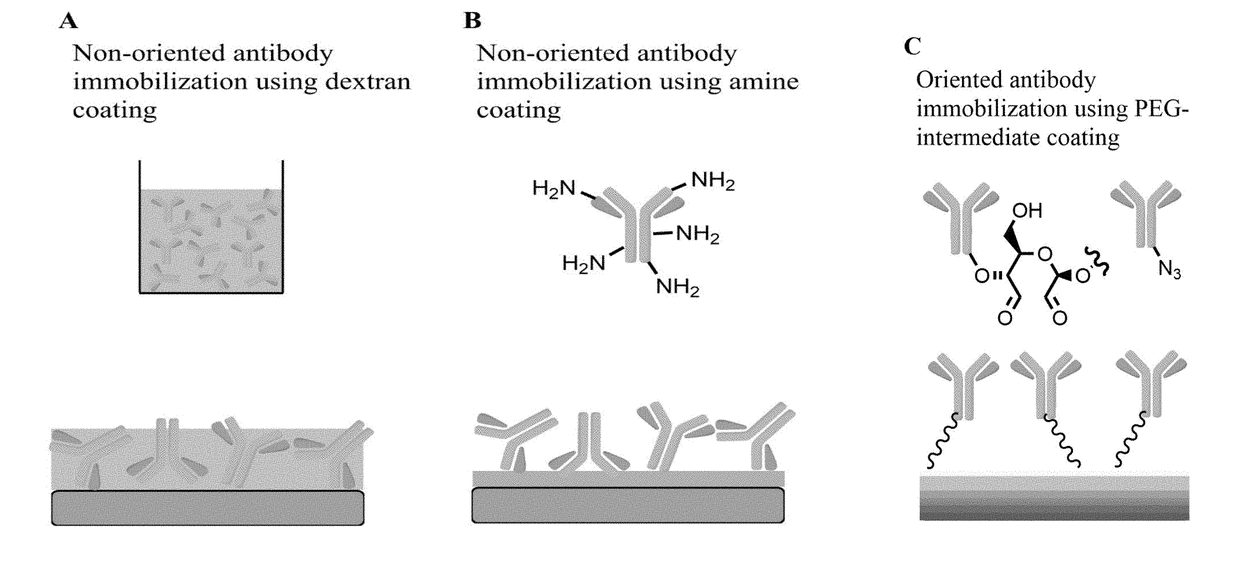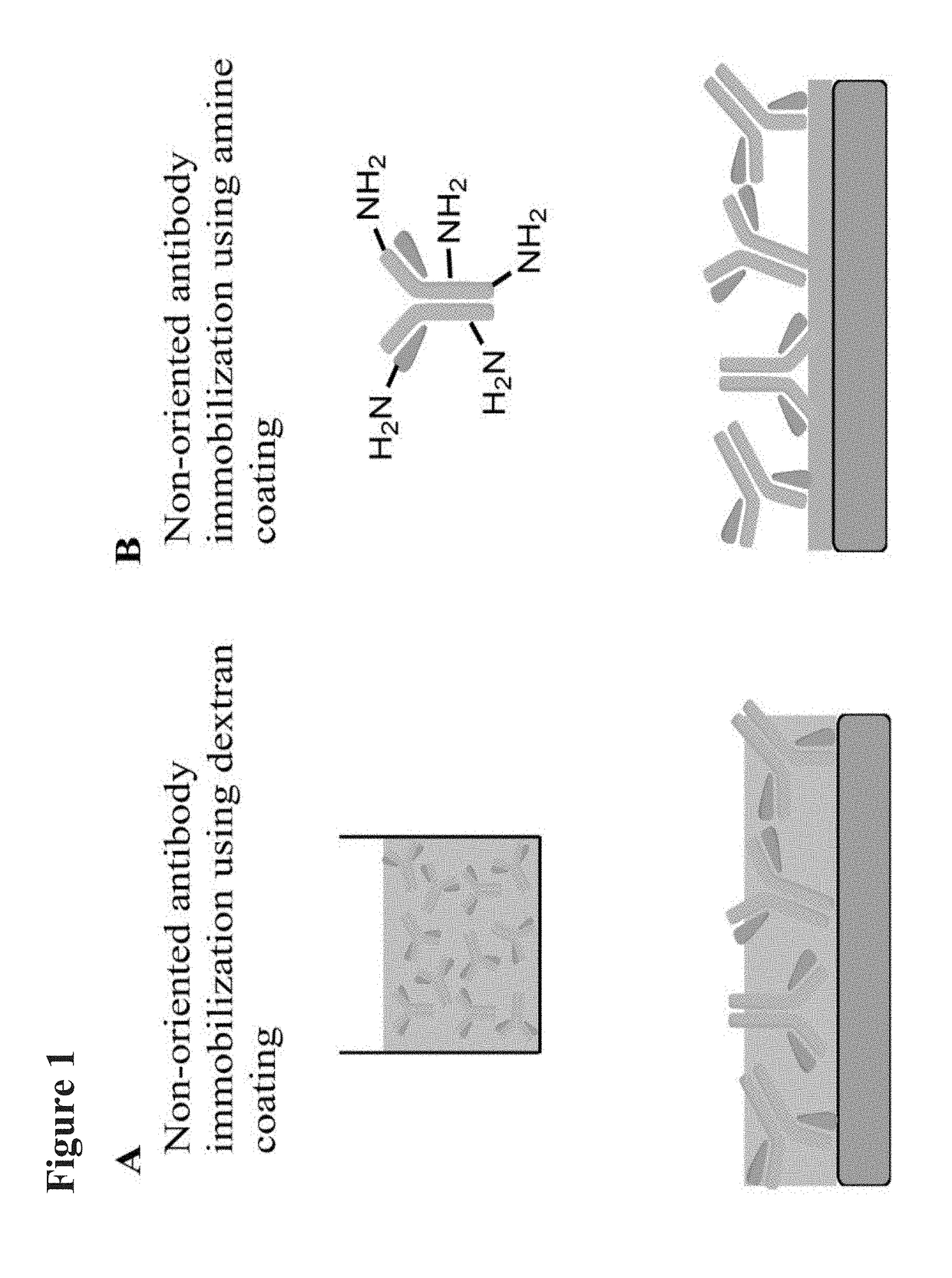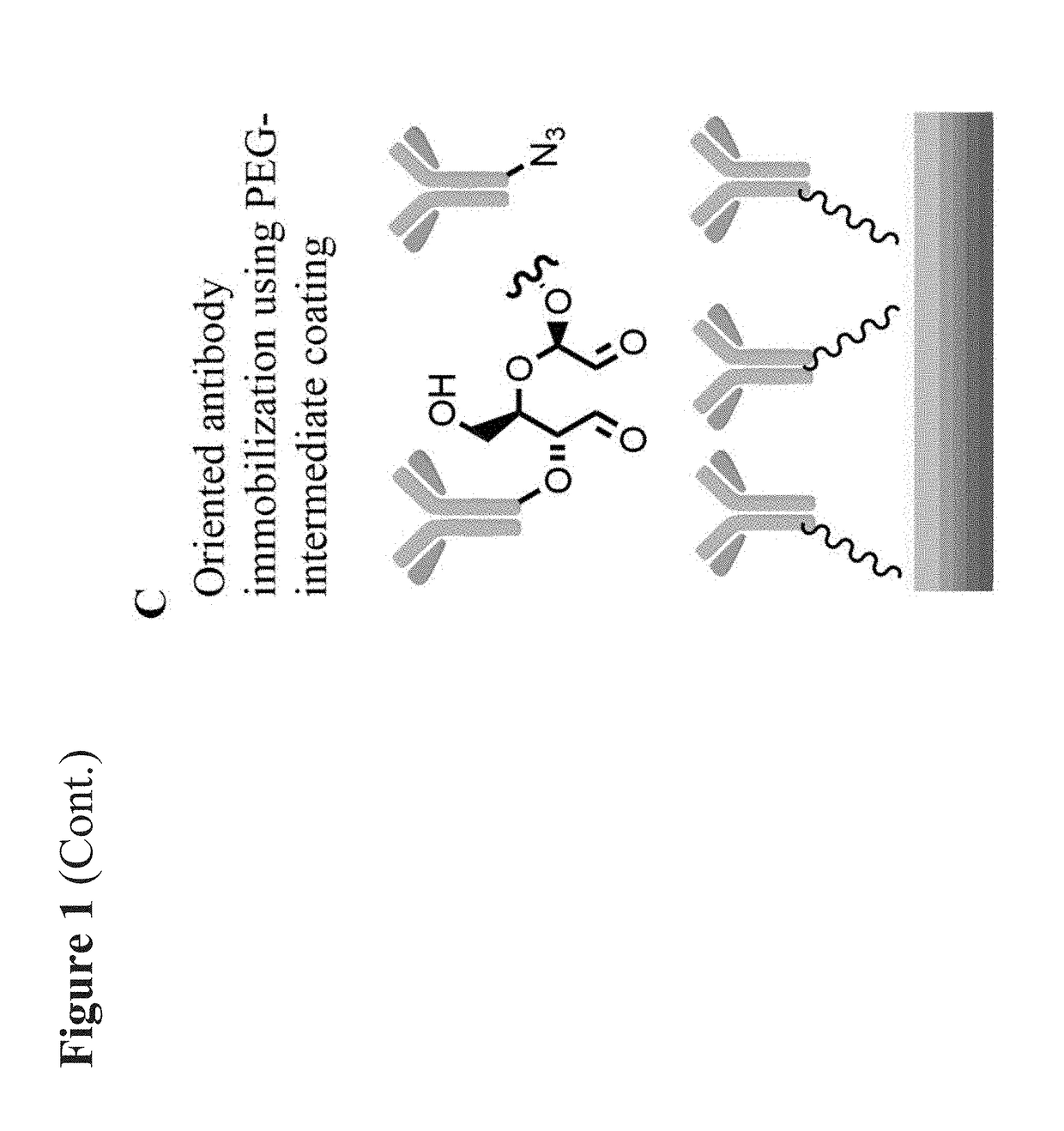Medical devices coated with polydopamine and antibodies
a technology of polydopamine and antibodies, applied in the field of medical devices, can solve the problems of limited short- and medium-term success of synthetic grafts used for the treatment of pads, limited short- and medium-term success of stent implantation, and late thrombosis
- Summary
- Abstract
- Description
- Claims
- Application Information
AI Technical Summary
Benefits of technology
Problems solved by technology
Method used
Image
Examples
example 1
Preclinical Assessment of Orthotopic Prosthetic Aortic Valve Implantation
[0195]Experimental evaluation will be performed on 6 adult Yorkshire swine (˜60 kg) after institutional review board approval. The animals will be fasted ˜12 hours prior to the induction of anesthesia. The pigs will be pre-medicated via IM injection with an anesthetic cocktail containing Ketamine, Xylazine and Atropine. Pigs will be transported to the pre-operative room of the Vivarium, where anesthesia will be induced via face mask using 5% isoflurane with 70% nitrous oxide / oxygen. Once anesthetized, an IV catheter will be placed in an ear vein. Once IV access has been achieved, the pigs will be intubated and placed on a ventilator for the remainder of the procedure. The pigs will then be transferred to the operating suites of the Vivarium, where the pigs will be maintained at surgical plane of anesthesia with ˜2-3% isoflurane with 70% nitrous oxide / oxygen and monitored (EKG, Pulse ox, jaw tone etc...
example 2
Development of a Universal Coating Method for Oriented-Antibody Immobilization on the Surface of Implantable Materials
[0208]Objectives: Surface endothelialization of implanted endovascular devices leads to speedy heal and reduced thrombogenicity. We have developed the Genous technology-Dextran mediated coating of anti-human CD34 antibodies on the stent that can capture circulating endothelial progenitors for enhanced endothelialization. This method, however fails to coat other materials such as ePTFE. The goal of this study was to develop a universal coating method that can be used for immobilization of anti-CD34 antibodies on the surface of a variety of materials.
[0209]Methods: The polydopamine film was formed via the oxidative self-polymerization of dopamine under slightly basic conditions on the surface of a variety of materials, i.e., metal stents, ePTFE grafts and pig pericardium. Subsequently, the polyethylene glycol (PEG) crosslinker was applied, which conjugated with the pol...
example 3
Surface Modification of Implantable Materials for Novel Therapeutic Applications
Objectives
[0212]To develop a means for the immobilization of biomolecules that can be applied to a wide range of solid surfaces and to test the effectiveness of the coating by developing novel antibody functionalized vascular prostheses.[0213]To demonstrate the potential of antibody functionalized materials as a novel platform for local drug delivery.
Study 1
[0214]We hypothesize that a polydopamine (PDA) surface modification in combination with an appropriately functionalized polyethylene glycol layer will produce a universal platform to immobilize bioactive molecules on a wide range of biomedical materials.
Background—Biomolecule Immobilization
Current Immobilization Techniques
[0215]Most standard biomaterials are produced from inert substances lacking functional moieties for chemical conjugation: therefore, non-covalent physical adsorption is a commonly used method for biomolecule immobilization. This tech...
PUM
| Property | Measurement | Unit |
|---|---|---|
| molecular weight | aaaaa | aaaaa |
| molecular weight | aaaaa | aaaaa |
| diameter | aaaaa | aaaaa |
Abstract
Description
Claims
Application Information
 Login to View More
Login to View More - R&D Engineer
- R&D Manager
- IP Professional
- Industry Leading Data Capabilities
- Powerful AI technology
- Patent DNA Extraction
Browse by: Latest US Patents, China's latest patents, Technical Efficacy Thesaurus, Application Domain, Technology Topic, Popular Technical Reports.
© 2024 PatSnap. All rights reserved.Legal|Privacy policy|Modern Slavery Act Transparency Statement|Sitemap|About US| Contact US: help@patsnap.com










